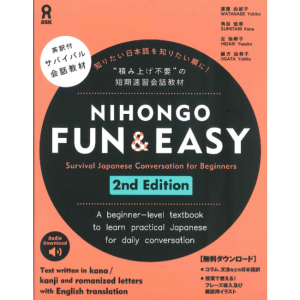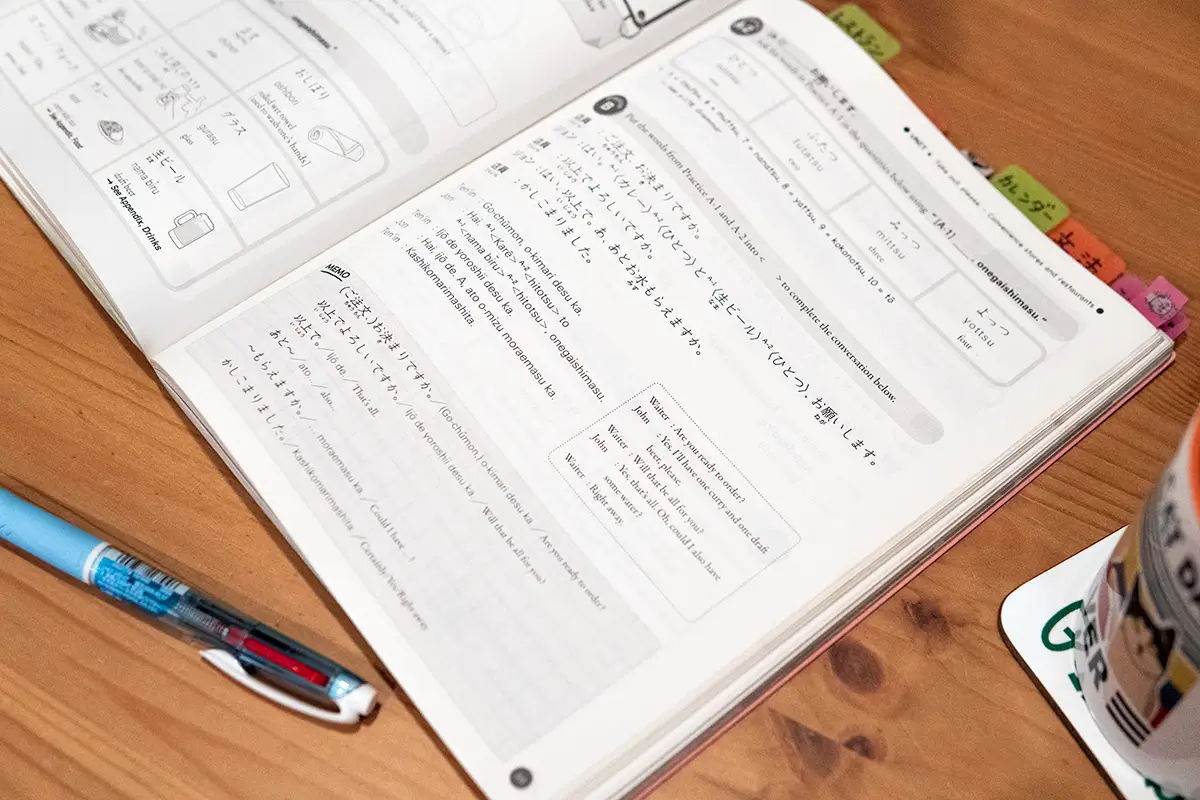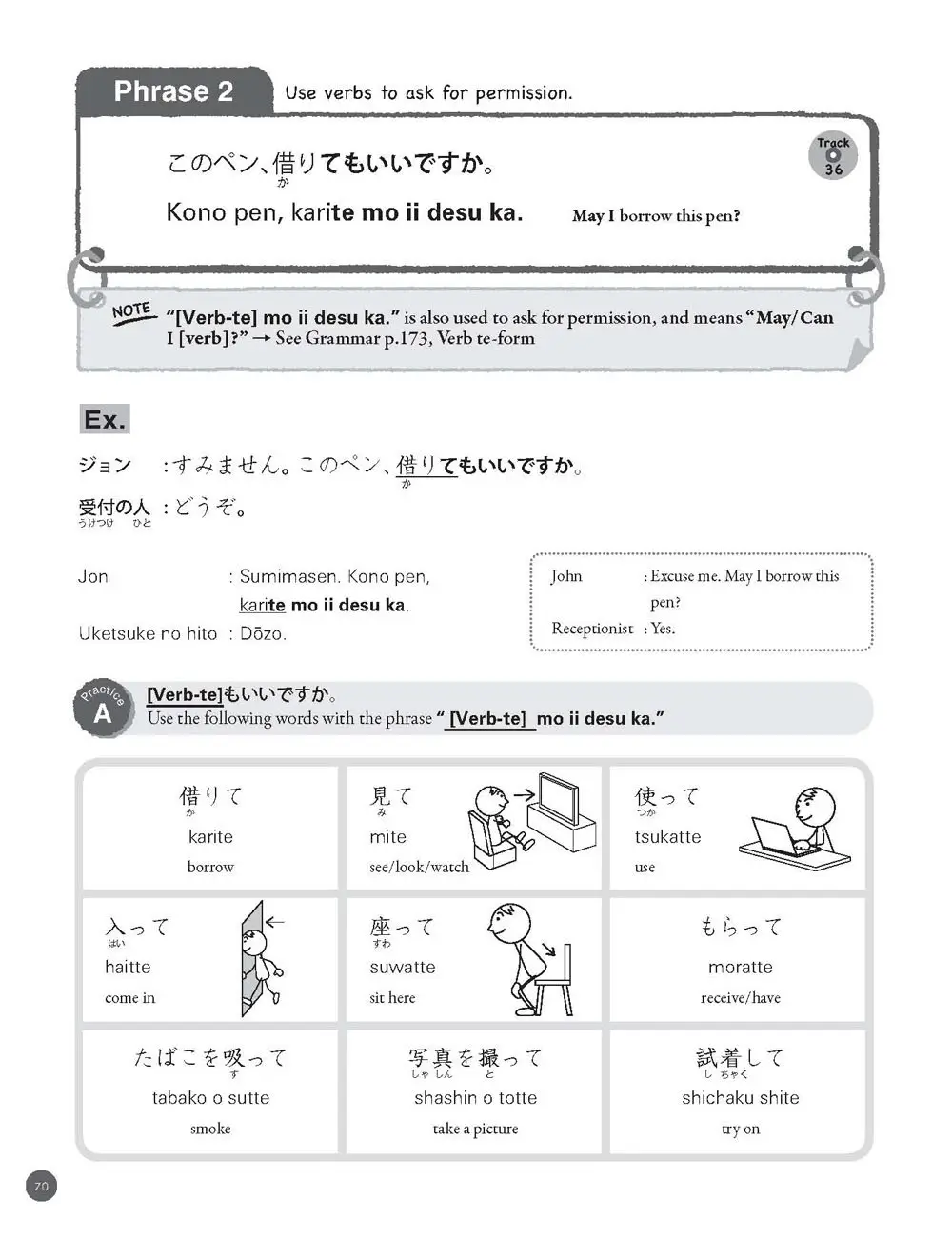
What does Nihongo Fun and Easy cover?
Nihongo Fun & Easy is a textbook designed for beginners to learn practical Japanese conversation skills. The book is structured into 12 units, each focusing on a specific aspect of everyday life in Japan.
- Unit 1: I am John.This unit helps learners introduce themselves in Japanese.
- Unit 2: Is there an ATM around here?Learners practice asking for locations and directions.
- Unit 3: How much is this?Focuses on shopping vocabulary and phrases.
- Unit 4: Take out, please.Covers ordering food and interacting at convenience stores and restaurants.
- Unit 5: Can I pay by credit card?Teaches learners how to ask for permission and use credit cards.
- Unit 6: Please wait a moment.Includes phrases for making polite requests.
- Unit 7: Does this (train) go to Yokohama?Helps learners navigate public transportation.
- Unit 8: I'm going to an art museum.Covers discussing future plans and activities.
- Unit 9: How do you like living in Japan?Focuses on expressing opinions and impressions.
- Unit 10: What does that taste like?Includes vocabulary related to food and dining experiences.
- Unit 11: It's nice weather today, isn't it?Teaches learners how to engage in casual conversations about the weather.
- Unit 12: Would you like to have a cup of tea?Covers inviting others and engaging in social interactions.
Student Review

Nihongo Fun & Easy fills a really important gap in the market. Not quite an in depth academic study, but much more detailed than a phrasebook, it gives the learner just enough to get going without overwhelmig them. If you're travelling to Japan, but not really looking to write or read Japanese it's a really efficient way to better enjoy your Japan trips.
The design of the book is particularly nice, clearly presenting vocabulary in a way where you can slot words like hitotsu, futatsu and mitsu in and out. Unlike Genki and Minna No Nihongo which either push you to Japanese script either from the beginning or after a few chapters, here, the conversations are presented in both Hiragana and romaji from start to finish.
With the second edition at least there's a lot of audio for you to listen to again and again. So while you're not pushed to learn hiragana to improve your pronunciation, the audio is always there to back you up.
While Nihongo Fun and Easy, doesn't go too in depth with Japanese particles, it does a good job at opening each chapter by presenting sentence structures as templates for the reader to create their own sentences. Just learn the template and switch out the words to tell your own information. This is a good way to get learners making their own sentences quicker than usual, but those looking for absolutely mastery may be better off starting with Genki.
Similarly, it doesn't shy away from more complicated words or conjugations where needed. For example, many when they first go to Japan are shocked at how much information is seemingly thrown at them when they sit down in a restaurant or enter a konbini. But Fun and Easy Japanese presents this routine dialogue for you clearly, without insisting a greater understanding of the grammar involved. Let's face it, not everybody is examining particles when ordering their dinner!
The book is fundamentally set up in to two halves, with chapter 1 to 7 focusing on travel Japanese such as questions and instructions. From chapter 8 it starts to introduct more conversational language such as questions, being able to talk about your life and past experiences.
That's not to say that it completely abandons typical grammar as there's a handy wordbook that comes with it, detailing useful vocabulary and tables and charts for various conjugations. Just be aware that those studying without a tutor will need to cover some of this material again if you become interested in taking JLPT, etc.
Teacher Review
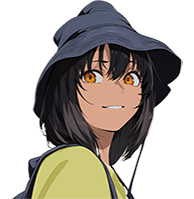
Before using Nihongo Fun and Easy:
Nothing! And that's one of the strength of this textbook. If you have an upcoming Japan trip, or you're just looking to dip your toe in to the world of Japanese language learning, there's no real need to study anything before picking this book up.
That said, most of the pages do feature hiragana along with the romaji, and so if you're looking to really nail your pronunciation, having a quick crash course in hiragana before reading wouldn't hurt!
What to read next?
For the traveller: For those that simply want to learn Japanese to make their travels easier, the natural next step is to take a look at Nihongo Fun & Easy 2.
For the language learner: Maybe you're someone looking to dig deeper in to getting the most out of the language? In that case, stopping by Genki 1 would be our recommendation. You may be able to skim read the first few chapters due to having learned much of it here, but it's the next clear route to getting a better grip of grammar.
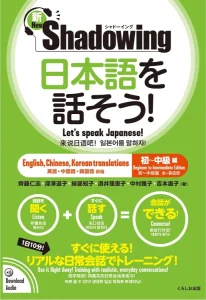
Shadowing: Let’s Speak Japanese! Beginner to Intermediate
Review of “New Shadowing: Let’s Speak Japanese!” N5–N2, audio shadowing drills and casual–polite dialogues to boost natural speech.
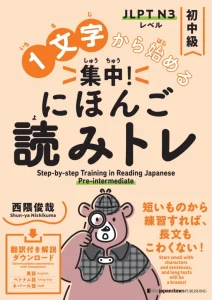
Step-By-Step Training in Reading Japanese: Pre-Intermediate
Master JLPT N3 reading with clear, progressive training books that improve kanji, grammar, and comprehension skills.
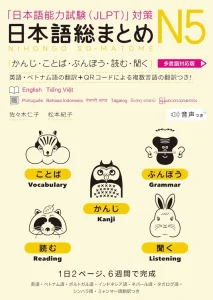
Nihongo Sou Matome N5
Structure your study with Nihongo Sou Matome JLPT N5! Prepare for your exam with 6 weeks of planned grammar, listening, vocab and kanji study.

